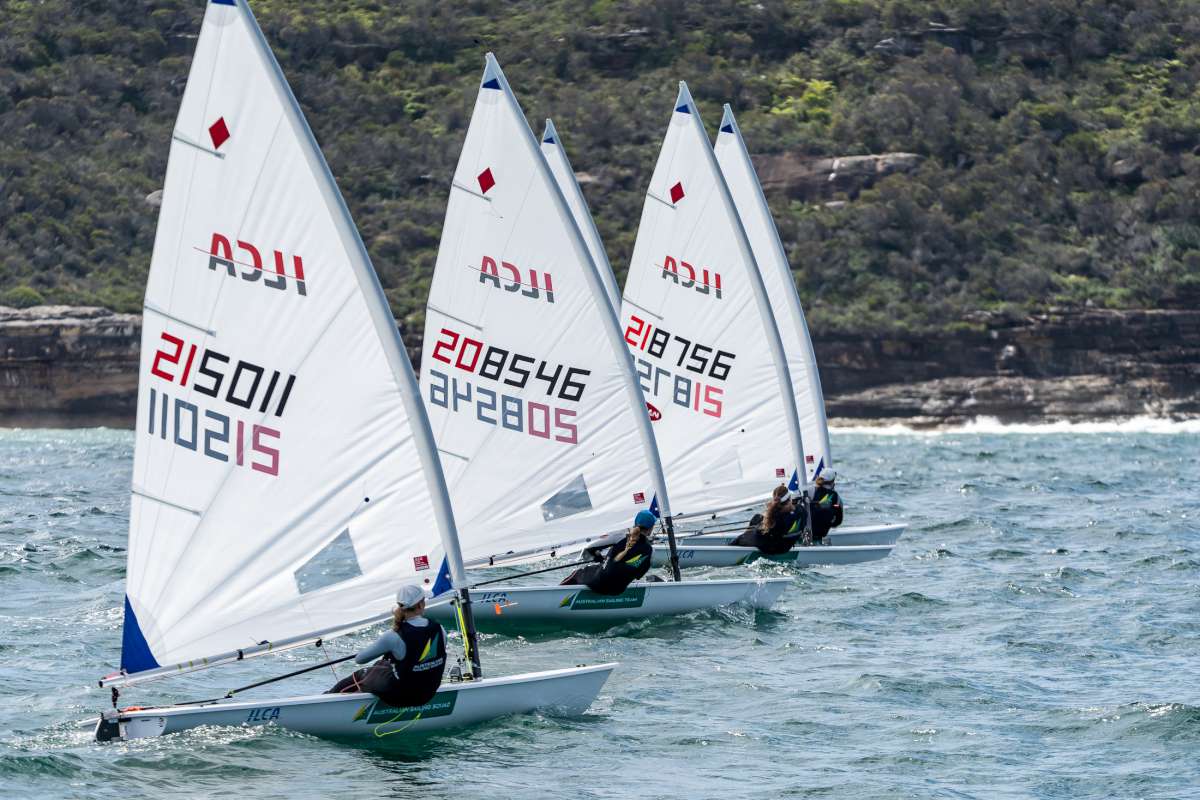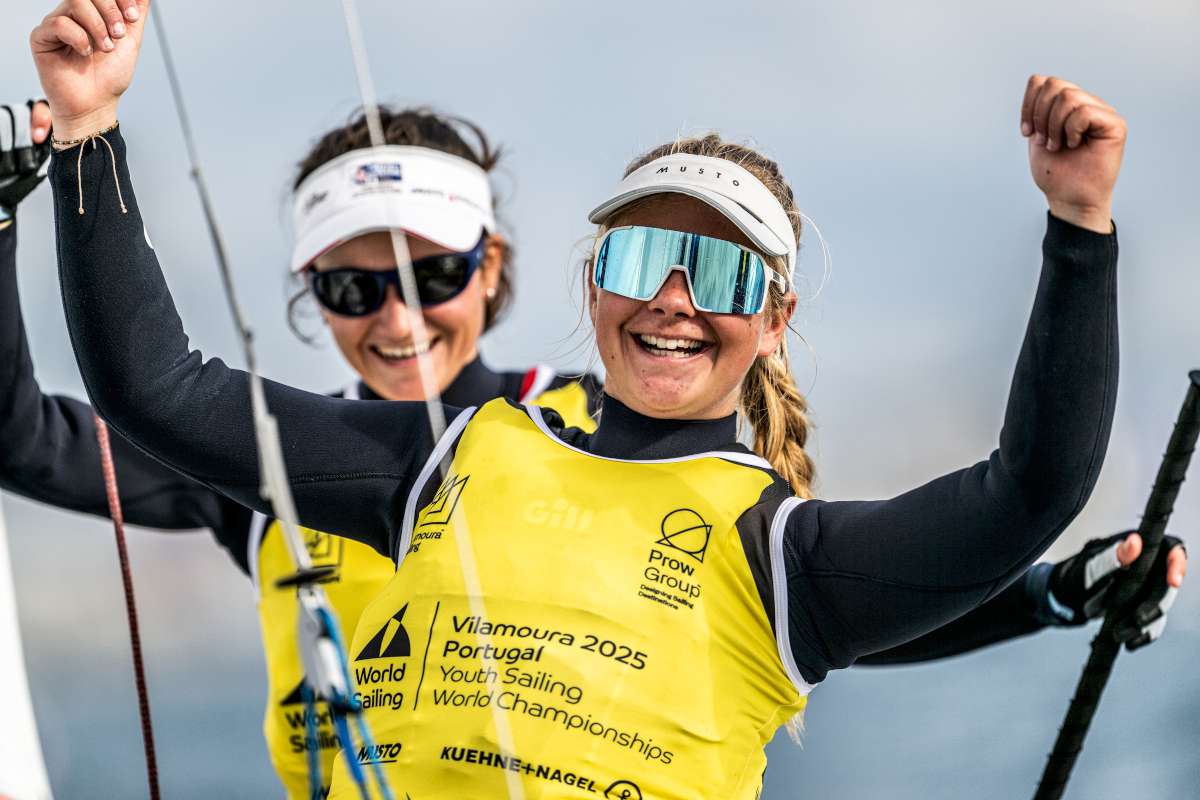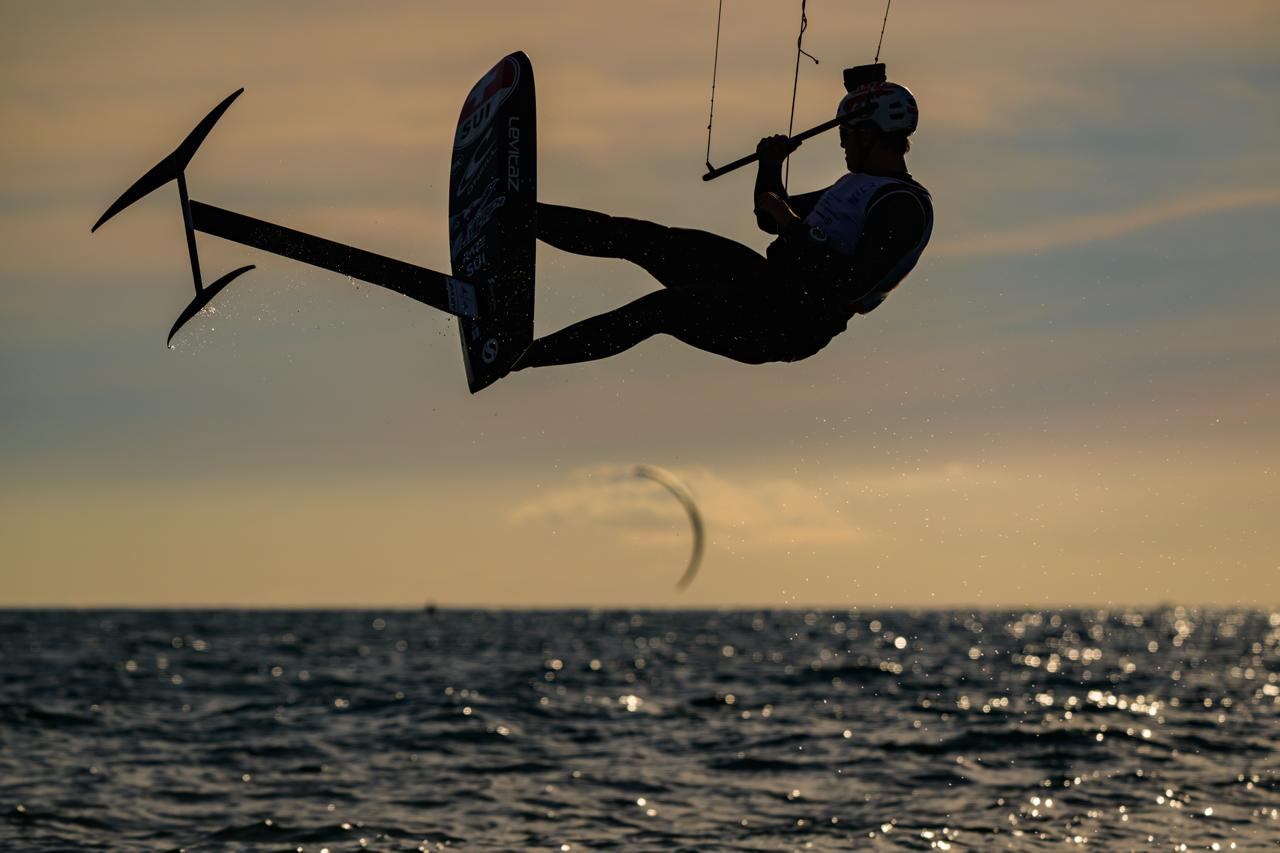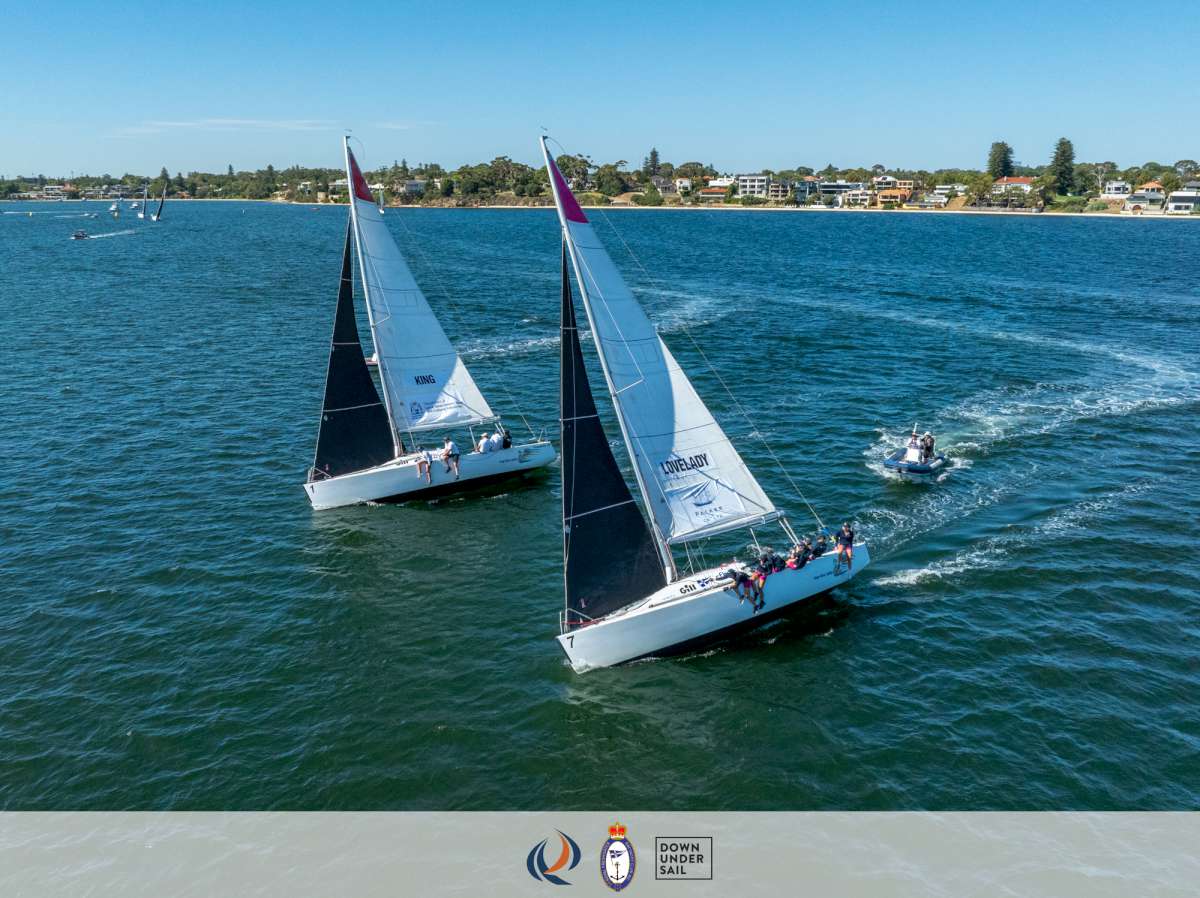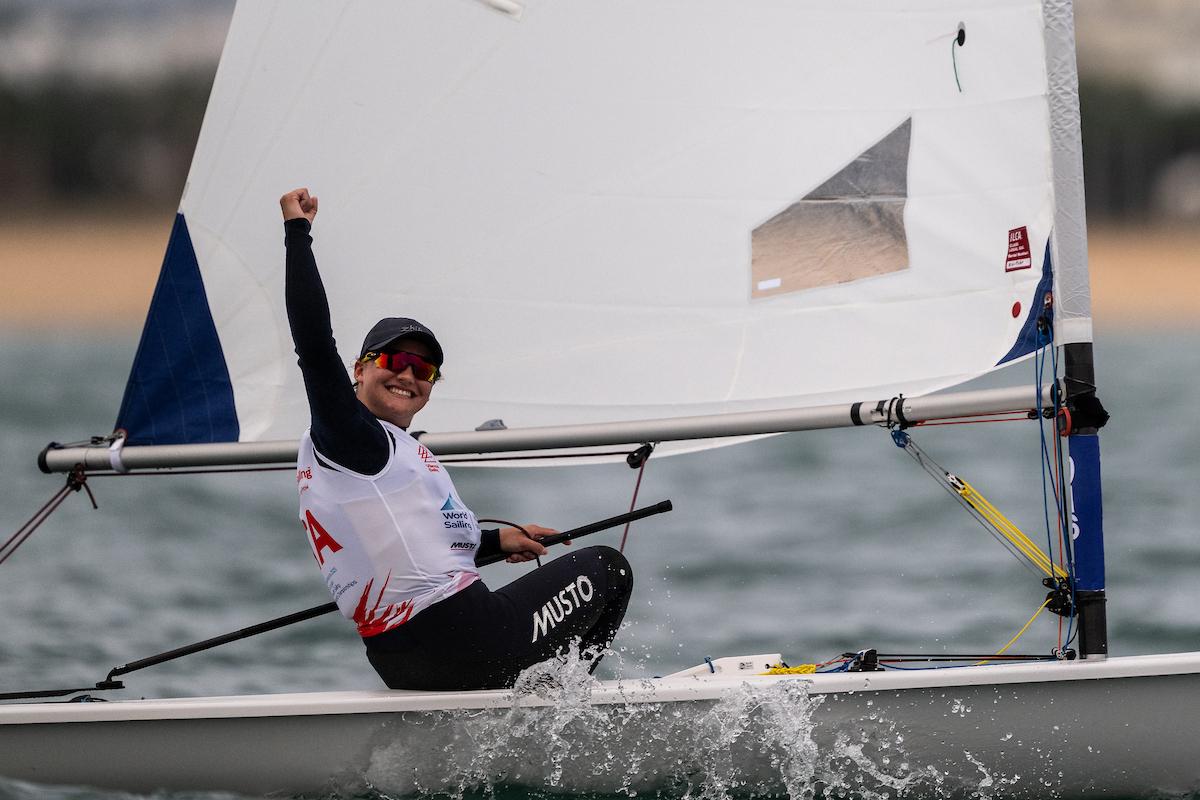When I first saw that glimpse of land at 12:05pm on the 11th May after 31 days at sea, tears welled up in my eyes as a sense of relief. That lingering question that had been in my mind for so many days of “when will we get there”, had just been answered.
I had spent the last couple of hours scanning the horizon to see if I could spy that first glimpse of land as I knew we were getting so very close to being able to spot it. I was so excited, just like a child on Christmas Eve waiting for Santa to come.
My realisation that land was potentially in front of us was when I could see a small clump of clouds just above the blue horizon. Neil spotted land first and pointed it out to me.
My excitement immediately intensified, as I knew we were so close to completing the hardest and longest passage of our journey across the Pacific Ocean and the longest sea passage that most offshore sailors choose to do. This was our dream and one of the biggest achievements in both of our lives and, most importantly, we had done it together.
When did the dream begin?
It began 14 years ago for me when I first met Neil, it has been about 40 years for Neil when he first had the dream of sailing across the Pacific.
I thought at first, how awesome that sounded visiting exotic places and living on a sailing yacht. But then thought about how could I overcome my sea sickness, my fear of being so far from land, my family and friends and I was green to the sport of sailing.
I also thought that maybe Neil might change his mind and be happy to buy a boat and sail locally in the city of Perth, Western Australia where we lived. Well, that did not happen.
As time progressed, Neil’s interest in and time spent on researching sailing the Pacific Ocean increased. He encouraged me to read blogs and books and that then got me interested in the idea.
There were stories of other women like me, who had no idea of one end of a sail boat to the other, who managed to embrace the cruising lifestyle and do ocean passages. It did not take long for me to be inspired and get hooked and
so the dream became one that we both shared.
We spent years researching types of boats, to find one that would suit both our needs. Mine was more about having comfort features such as two toilets (in case one broke, as I was not keen on the idea of using a bucket), a water maker, a decent size bed and having some form of communication to our family while at sea. Neil’s needs were more about the sailing aspect of the boat and we ended up finding a boat which provided a satisfactory balance of compromises in Charleston, South Carolina USA.
We purchased Echo Echo in October 2014. She is a 2003 Beneteau 473. We registered her as an Australian vessel and her home port is now Fremantle.
We spent 2015 sailing Echo Echo on the Intracoastal Waterway, the Atlantic east coast of the USA and in the Bahamas. This was our time to get to know the boat and also our time to work out what needed to be done to make her a safe bluewater cruising boat.
She is a sturdy boat and has a very practical live-aboard layout. We have the two cabin version and a storage room or, as we call it,‘our garage’. She was in excellent condition and had lots of extra features when we purchasedher and we felt that she had future potential for us as a means of getting us to fantastic locations, but also as our liveaboard home.
We have had to learn how to fix many things ourselves and being a teacher and Neil an accountant, we knew very little in regard to those areas of a boat. Although Neil had sailing experience, his boat repair skills were minimal and therefore it has been a massive learning curve for both of us.
Who would have thought that a person who goes green with seasickness, had limited sailing experience, hates being in the wind and has definitely never been the outdoors adventurous type would have sailed this far across the Pacific?
I have always been the: 'love my teaching job, spending lots of time with my family and friends, loves fashion and the well-groomed' type of person. It did not take long to adjust to the cruising lifestyle and my old routines of using makeup, keeping my hair well styled, wearing nice clothes, shoes etc. were thrown out as a thing of the past; I literally mean thrown out, as all those nice clothes, shoes and bags go mouldy on a boat stored in lockers.
Who cares what you look like or if you are wearing the same clothes two days or more in a row or any clothes for that matter when you are in the middle of the ocean?
I have come to enjoy the no makeup and no hairstyle look, as it is easy to maintain. However, I do insist on one monthly routine which I refuse to do without and that is to dye my hair. I do it myself and rinse off the dye usually in the ocean by going for a swim.
Many of my friends thought I was crazy for doing something they perceived to be so risky. It is not risky if you plan wisely and prepare the boat and yourself well. The cruising lifestyle is not just about sipping cocktails in exotic places (although cruisers do a lot of that), it is also sheer hard work that can be both mentally and physically draining.
There have been many times when Neil and I have been so disheartened when things keep going wrong, but having a dream and focusing on keeping it alive was worthwhile and got us through those difficult times.
We also had lots of support from family, friends and strangers who sent us encouraging messages on our blog, You Tube and Facebook pages, for us to keep the dream alive and to keep persevering. If we had quit each time things were tough, we would not have felt this great sense of achievement in sailing such a long passage from Panama to French Polynesia.
Off we go
In January this year we left the east coast of the USA and set sail for Panama via the Bahamas, Cuba, Jamaica and the San Blas Islands. We did the canal crossing at the beginning of April and set sail for the Marquesas in French Polynesia on April 12.
At 12:05pm May 11, the land ahead I could see, was the Marquesas Islands of Hiva Oa and Tahuata. As we got closer we were also able to see the island of Fatu Hiva and we could see how lush and rugged the volcanic islands look from the sea.
The journey had been a long 32 days non-stop from Panama to the Marquesas by the time we anchored. We encountered a different journey from those we had read on many blogs and books.
It is typically called the coconut milk run, but for us it was more like a coconut milk shake as the sea state was confused with large swells, often from several directions at once and the winds were mostly Force 5 and 6 rather than the typical Force 4 trade winds that we had read so much about.
The winds we encountered were constantly changing direction and strength which made sailing very challenging and frustrating. Sailing across the Pacific is considered mainly a downwind route, but the first day we got out our whisker pole it snapped off the mast which meant we had to try other alternative methods to sail downwind or hope that the wind gods would look favourably on us and give us a breeze so we could two-sail reach.
Unfortunately, we either had too strong winds or no wind and, although we tried various methods to sail downwind, we did not manage to do any of those successfully. So we made the decision to zig-zag our way by gybing to the Marquesas.
This meant that we did a large number of additional miles and our total nautical miles was closer to 4600. A lot more than the approximate 2800 nautical miles via the rhumb line. We tell people that we went via the scenic route.
Empty horizon living
Living on the boat for that length of time was one of the hardest things I have ever done.
I suffered with sea sickness for nearly 25 days out of the 32 days at sea. I lived on sea sick tablets and ate small amounts of food.
The first two weeks were not too bad and I was coping with the time at sea by sticking to a routine, which included doing my watches, checking into the radio net daily, downloading weather data, keeping a blog and doing the galley work, as well as spending lots of time laying in the cockpit to reduce the seasickness.
Even though writing my blog was very difficult at times, I would make myself type small amounts at a time. It was important to me to keep doing the blog to remember and capture the experience.
By day 20, I was living each day one at a time and going through the day’s routine to get me through. By day 25, I wanted to get off the boat, but questions kept going over and over in my mind, such as “I want to get off the boat, but where could I go?” “How could I stop the sea sickness and make myself feel better?’ How could I make this time more bearable and make the time go quickly?
Time dragged on and on, as the incessant roll of the boat continued not for hours or days but for weeks. I was wishing for days to disappear and for the passage to end. The constant creaking, banging, sliding, groaning sounds that the boat made as it was surging up and down the waves and swell just didn’t want to stop.
Even when I felt scared, sick and tired, I had to keep believing in Neil’s ability to get us to French Polynesia and continue to have faith that Echo Echo would get us there safely.
Not only did our whisker pole break, but our headsail started to rip at a seam and so we took it down and patched it up using our Sailrite sewing machine. We did some of the more difficult stitching by hand.
We found bits of plastic on the deck when doing the daily walk around and they came from some of the blocks deteriorating due to weathering and also from the occasional immense pressures that are applied to the sails and gear by the wind.
We had read that when you sail across the Pacific Ocean you can set the sails and forget them for days and weeks as the trade winds are so consistent. Well, we had our own motto of: set the sails, reset the sails, then reset them again.
We were often changing tactics due to very frequent changes in the wind direction. There seemed to be days on end where we experienced wind shifts of up to 40 degrees or more often in a matter of only ten minutes.
We did not want, or expect it to be, as easy as “set the sails and forget them”, but we didn’t expect the wind shifts to be so frequent and so variable, which made the trip very tiring and difficult.
Our best day was day 10 when we reached the islands of the Galapagos and we sailed close to them.
We had not planned to stop in the Galapagos, but it was so calm near the islands that we hove to, had a sit down lunch and belatedly celebrated our crossing of the equator at close to midnight 12 hours before. The sea was so flat and the weather so calm that I had a break from being sea sick. It was a magical day.
Island hopping
Reaching the Marquesas, was such a relief and the end of the long sea passage, but it was also the start of our time to explore the islands of the South Pacific.
Our time in the Marquesas included visiting the islands of Tahuata, Hiva Oa and Nuka Hiva. We checked in at Hiva Oa and the highlights of this island included a day tour of Hiva Oa including a Polynesian dish for lunch with the local guide John in his four-wheel drive.
The views of the bays were spectacular and we got to see the Smiling Tiki and the stone tikis on the Te I’ipona Me’ae in the valley behind Puama’u. We visited Gauguin’s Museum and spent a day at the resort over-looking Traitors Bay.
The day at the resort included lunch, use of the pool, access to internet and a breathtaking view of the bay.
The grocery stores have a reasonable supply of fresh produce when the ship has been in.
Disadvantages of Hiva Oa include: the shops and the town of Atuona were a long distance from the main anchorage, prices were expensive, no available internet at the anchorage, the protected anchorage area is very tight so everyone needed to use a stern anchor as it was peak cruising season and there is often a very strong surge which made accessing the dinghy dock very difficult and almost dangerous at times. Some dinghies were punctured or overturned.
Visiting the bays of Tahuata were easier in regards to dinghy access and surge. Hanamoenoa Bay is a good spot to make water, clean the hull and catch up on sleep after the long passage from Panama before checking in at Hiva Oa. However, you cannot access the beach here as it is private and very rocky. Villages of Vaitahua and Hapatoni on Tahuata are small,
the people very friendly and nice to visit.
Nuka Hiva is the principal island of the Marquesas and Taiohae Bay had strong surge issues similar to Hiva Oa. You can do an island tour and a trip to visit the third largest waterfall in the world with local guides, which I would recommend.
The town at Taiohae has a post office, a bank, a hospital, a hardware and a few grocery stores. There is also a local fresh produce market that is available near the dock a couple of times a week, but you need to go extremely early (5 to 6am) as stock is limited.
Kevin at Yacht Services provides a range of services for cruisers and is very helpful. WiFi internet access is available from the café at the dock. Diesel and gasoline fuel were available at both Hiva Oa and Nuka Hiva docks.
Visiting the Tuamotus was for us, a highlight in itself. They are the largest group of coral atolls in the world. There are so many atolls to visit and many of them with passes that are accessible in most conditions.
A popular first stop is Raroia. Our highlights at Raroia were snorkelling the pass and huge coral bombies, having a beach BBQ with fellow cruisers on Kon Tiki Island, watching the Kon Tiki Expedition video, visiting the village and spending time with the locals.
While in the Tuamotus make sure you visit a pearl farm to see the legendary Tahitian black pearls and if you are a diver, dive the south pass in Fakarava.
The only downside to the Tuamotus is needing to time the slack tide for entering the passes and limited internet and provisions on many of the atolls, but the charm and tranquility make visiting these islands a must.
As we continue our journey through French Polynesia and are beginning now to explore the Society Islands, that time I spent doing the 32 day passage is becoming more distant and less painful in my mind. My confidence and sailing ability is also continuing to increase.
French Polynesia is a beautiful place to explore and, when visiting small deserted motus, we get an understanding of how the early explorers must have felt when seeing land and visiting new places for the first time. How courageous these people were, as they did not have the technology, charts and navigation tools which we use to guide us today.
One of the best aspects about the cruising lifestyle, to me the most important one, is meeting people from different cultures and especially meeting other cruisers. The cruising community is very close. We keep meeting up with people we have met in previous countries and anchorages and also those who, until meeting, have only been known to us as voices on the HF radio. It is such a friendly, supportive and helpful community and many of the friendships we are making, we hope will be lifelong.
We recently spent a weekend participating in the Pacific Puddle Jump Rally in Moorea. This really highlighted to me how many wonderful friendships we have made so far along this journey.
Many of the people I have met are so inspiring, and I take my hat off to all those who have circumnavigated or are close to doing so, as it is an awesome achievement and one I can aspire to.
If you have ever dreamed of sailing and visiting exotic places, then take on the challenge and go and do it.
Would I do the long 32 day passage again? Probably not, but I am so glad that I did challenge myself and do it. I was a novice sailor and did it anyway. Be prepared to spend time planning and preparing for your trip. The reward I felt of reaching our destination was amazing.
Live the dream, we did and still are.
Jeannette Hay








